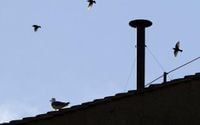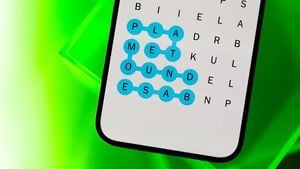Vatican City is buzzing with anticipation as the conclave to elect a new Pope officially begins this afternoon, May 7, 2025. A total of 133 eligible cardinals from the Roman Catholic Church (RCC) have gathered in the Sistine Chapel to select the next leader of the Church, following the passing of Pope Francis. This event marks a significant moment in the Catholic faith, as the new Pope will be expected to continue the reforms initiated by his predecessor.
The conclave started after a solemn gathering in the Cappella Paolina of the Apostolic Palace, where the cardinals prayed together before proceeding to the Sistine Chapel in procession. There, they took an oath and prepared for the voting process to commence. The atmosphere is thick with expectation as the faithful gather in St. Peter's Square, eager to witness the outcome of the first voting round.
The process of electing a new Pope is steeped in tradition. Each cardinal receives a ballot inscribed with the phrase "Eligo in Summum Pontificem" (I elect as Supreme Pontiff). After casting their votes, the ballots are placed in a special container, and the results will be revealed through the color of smoke emitted from the chapel's chimney. White smoke signifies that a new Pope has been elected, while black smoke indicates that the cardinals will reconvene the following day.
As the day unfolds, the eyes of the world are fixed on the unassuming chimney atop the Sistine Chapel, which will be the first indicator of the conclave's outcome. The first smoke signal is expected to emerge sometime in the evening, as the cardinals deliberate and vote. The anticipation is palpable, and the faithful have begun to fill St. Peter's Square, hoping for a glimpse of white smoke.
This year's conclave is particularly notable due to the ongoing jubilee year, which has drawn increased crowds to Vatican City. The last jubilee year occurred in 2000, making this a rare occasion for many. Security measures have been heightened around St. Peter's Square to accommodate the influx of visitors, ensuring that the sacredness of the event is preserved.
In the lead-up to the conclave, the cardinals expressed a strong desire for the new Pope to carry on the work of Pope Francis, focusing on issues such as social justice, peace, and environmental stewardship. The cardinals have emphasized the need for a leader who embodies compassion and is attuned to the needs of humanity, especially in times characterized by conflict and division.
During the final preparatory meeting, which involved 173 cardinals, discussions centered around the qualities and characteristics desired in the next Pope. The Vatican highlighted the importance of having a shepherd who can guide the Church with empathy and understanding, particularly in addressing the needs of the marginalized.
Among the participating cardinals, 108 were appointed by Pope Francis, while 20 were appointed by Pope Benedict XVI and five by Pope John Paul II. Notably, the only Dutch cardinal, Wim Eijk, is among those eligible to vote. To qualify for participation in the conclave, cardinals must have been no more than 79 years old at the time of the previous Pope's death, ensuring that the electors are of a certain age and experience.
The conclave is significant not only for the Catholic Church but also for the broader global community, as the new Pope's stance on various social and political issues can influence millions. The last conclave held in the Sistine Chapel was in 2013, when Pope Francis was elected. Since then, the Church has navigated numerous challenges, including addressing clerical abuse scandals and responding to calls for greater inclusivity.
As the sun sets over Vatican City, the anticipation continues to build. The faithful gathered in St. Peter's Square are hopeful that the first ballot will yield a new leader who can navigate the complexities of modern society while remaining rooted in the core values of the Church. The outcome of the conclave will not only determine the next Pope but will also set the tone for the future direction of the Catholic Church.
With the first vote scheduled for this evening, the world waits with bated breath to see if the smoke from the Sistine Chapel will signal a new beginning for the Catholic Church. Will it be white smoke, heralding the arrival of a new spiritual leader, or black smoke, indicating that the cardinals will need to continue their deliberations? The answer is just hours away, and the faithful remain hopeful for a sign of hope and renewal.




